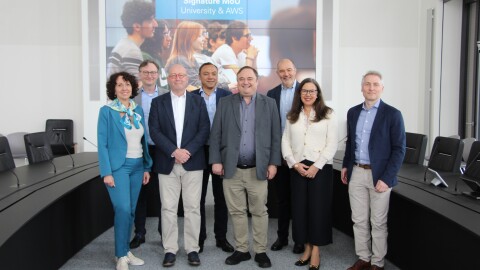The Museum of Women's History Foundation, supported by Tech To The Rescue – an NGO that aims to connect ambitious non-profits with technology companies – has created the Virtual Women’s History Museum, a digital platform that aims to provide a comprehensive and accessible repository of knowledge and educational materials about women who have shaped world history. To help accelerate the work, Amazon Web Services (AWS) has provided hosting and other cloud services at no cost.
“The absence of women's history in the collective consciousness is a problem that affects us all. English-language Wikipedia contains more than 4.4 million biographies about notable writers, inventors, and academics, but less than 19% of these biographies are about women,” says Dr. Agnieszka Jankowiak-Maik, Vice President of the Museum of Women's History Foundation. “At the same time, only 13% of Wikipedia editors identify themselves as women. In Poland, a survey conducted by BNP Paribas Bank showed that only 10% of school patrons are named after women. But a group of dedicated individuals is working to change that.”
Amplifying marginalised voices
The Virtual Women’s History Museum addresses the marginalisation of women in history, ensuring their achievements are properly highlighted. The museum's mission is to unite history initiatives and become a modern cultural, educational, and scientific research institution.
To achieve this, the museum received the necessary technical support from Tech To The Rescue and AWS. The collaboration between the Polish Women's History Museum, Tech To The Rescue, and AWS has resulted in developing a women's history database, a backbone of the first women’s history virtual museum in Poland. According to the museum’s founders, the full collection will be accessible to everyone, everywhere, in approximately six months. Progress can be followed here.
Designing for inclusivity: Ensuring accessibility
Dr. Agnieszka Jankowiak-Maik emphasises the importance of accessibility: "We strongly believe that accessibility is vital when it comes to online solutions. Therefore, we wanted our database to be as well prepared as possible for all people who would like to use it."
With AWS hosting, the museum aims to expand its global reach, providing an accessible platform for users worldwide to explore and learn about Polish women's history. The integration of AWS ensured seamless deployment and scalability, accommodating the museum's growing collection and increasing visitor traffic. While collecting biographies is still in its early stages, the museum's goals are far-reaching; biographies of legendary women will be equipped with scenarios and lesson plans for thousands of teachers, because change begins in school corridors.

Ada Lovelace, the first computer programmer
The Virtual Women’s History Museum is more than just a repository of information; it's a transformative platform that will reshape historical narratives for women in history worldwide. A good example of forgotten history is Ada Lovelace, a 19th-century mathematician considered the first computer programmer in history. Lord Byron's daughter, Ada was raised by a single mother who instilled in her a love of mathematics; she later collaborated with Charles Babbage on the Analytical Engine and was the first to notice its potential for tasks other than mathematical calculations.
Dr. Agnieszka Jankowiak-Maik says: "This is just the beginning. We plan to create a mobile application and add new content to the database, which so far has been created mainly by our foundation's experts and invited people. Young organisations with a vision often face huge challenges related to financing, which makes it difficult to access technology or know-how. With support, our visions can become reality and make a significant contribution to social change."
Celebrating women's contributions worldwide
The Virtual Women’s History Museum is a testament to what can be achieved through collaboration and determination. It's a celebration of women's contributions worldwide, and it's a reminder that we all have a role to play in shaping a more inclusive and diverse representation of history.
The Museum of Women's History aims to continue amplifying marginalised voices and reshaping historical narratives for women in history worldwide; expanding its reach and impact, and inspiring future generations to embrace the diversity and richness of women's stories.
The Virtual Women’s History Museum is a powerful reminder that our histories are intertwined, and that we must work together to ensure that all voices are heard and all stories are told.












